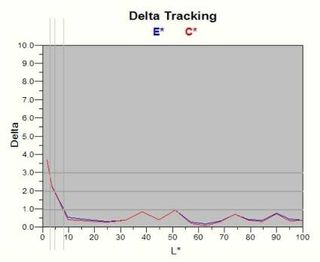Affordable 19" LCD Monitors
Calibration
Like last time, the monitors we tested were calibrated and measured with a spectrogram. Obviously, not everyone can afford a tool like this. The one we used, a LaCie, costs about 600 euros. But before you spend that kind of money, we offer free downloads of our own profiles for each monitor tested. You just need to download them, copy and paste them to your computer and change the color parameters as we advise for each. The end result is worth the time.
How It Works
The LaCie spectrum analyzer is an on-screen pallet set. When you run the application, it will prompt you to adjust brightness and contrast manually using the chart that follows.

Calibration produces a DeltaE graph. This gives the difference between the color requested and the one the monitor actually produces. A DeltaE of 1 or less means calibration is perfect. There will be no noticeable difference between the original color and the one reproduced. There is only a problem when DeltaE = 3; at this level, the human eye can tell the difference between two shades. LaCie determines whether calibration is successful if DeltaE is less than or equals two.
On the X-axis, values range from black (0) to white (100).
In the reference graph above, this means:
- DeltaE <3 = 97% of the colors, from dark gray to white, were adequately displayed.
- Delta E <2 = 95% of the colors displayed are good enough to be considered true.
- DeltaE <1 = 92% of the colors are perfectly reproduced on screen.
- Delta E >3 = 3% of the colors displayed are not true. The darkest (including black) are absolutely impossible to reproduce (zone with no curve).
To compare the curves of the test monitors with those of our two reference ones - a CRT and an LCD by LaCie.
Stay on the Cutting Edge
Join the experts who read Tom's Hardware for the inside track on enthusiast PC tech news — and have for over 25 years. We'll send breaking news and in-depth reviews of CPUs, GPUs, AI, maker hardware and more straight to your inbox.
Most Popular

